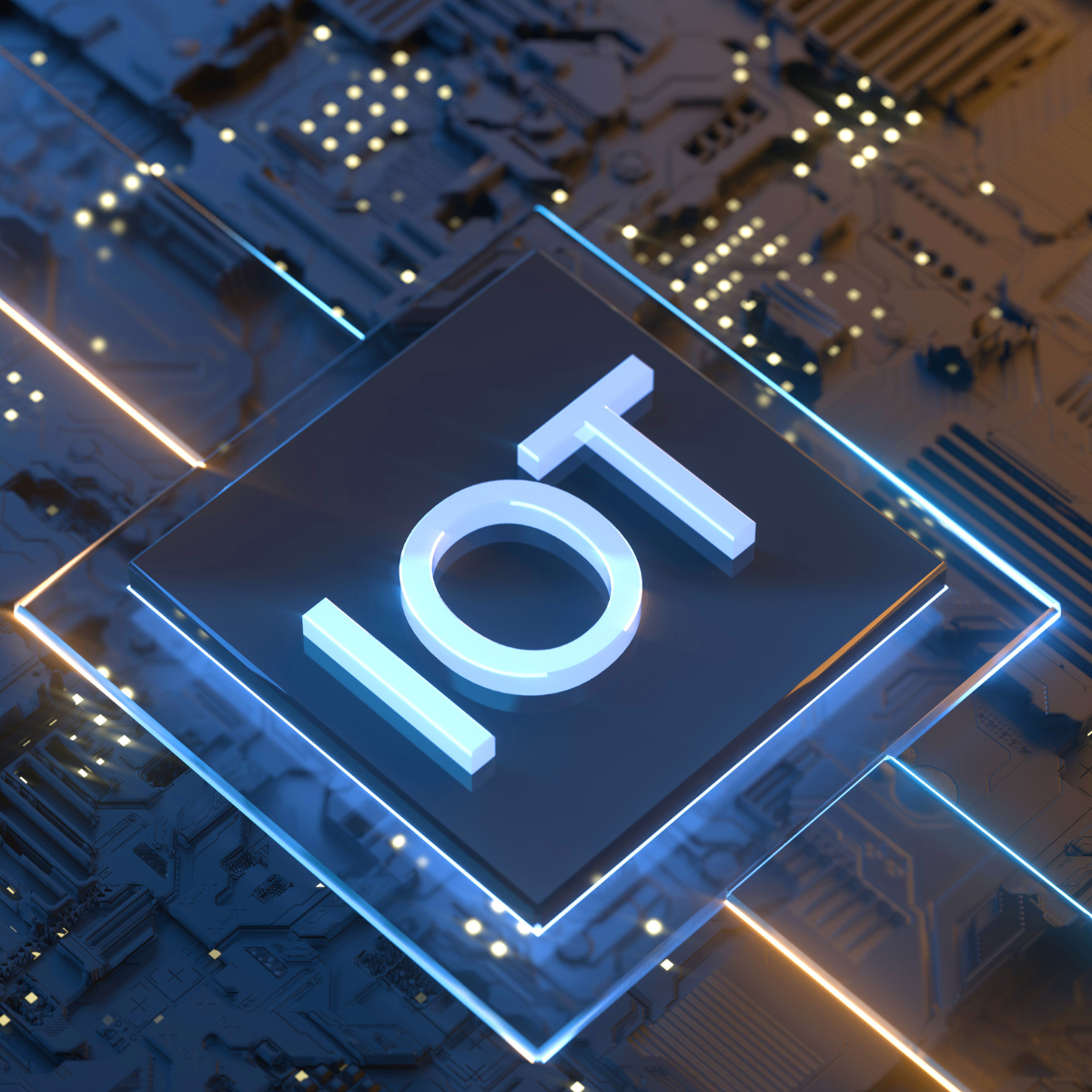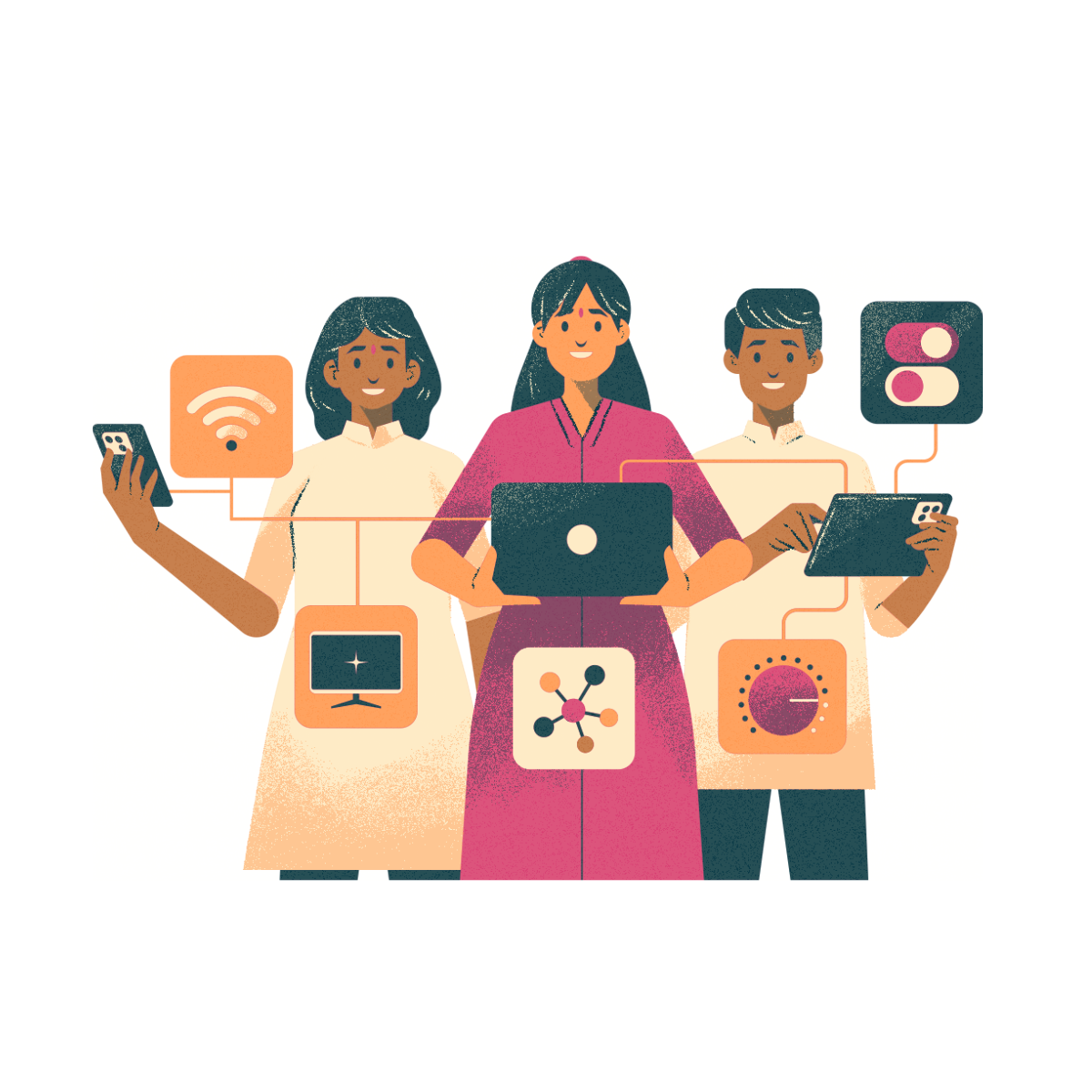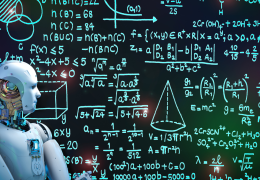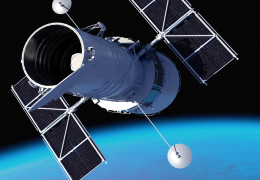In today’s digital world, the Internet of Things (IoT) is revolutionizing the way we interact with technology. The IoT connects everyday objects to the internet, enabling them to collect, exchange, and act upon data. As one of the most transformative innovations in recent years, IoT is reshaping industries, businesses, and daily life.
What is the Internet of Things (IoT)?

Smart home devices powered by the Internet of Things (IoT) provide convenience, efficiency, and enhanced security.
The Internet of Things (IoT) refers to the growing network of physical devices, vehicles, home appliances, and other objects embedded with sensors, software, and technologies. These devices can communicate with each other and transfer data over the internet, making them “smart” and capable of operating autonomously. The IoT can be found in everything from wearables to industrial machinery, with endless possibilities for improving daily life and business efficiency.
Why is the Internet of Things (IoT) Important?
The IoT has a profound impact on modern society because it allows objects to communicate and make decisions based on data, transforming our interactions with the world around us. With IoT, the potential to streamline operations, enhance safety, and increase convenience is massive. Below are some key benefits of IoT:
- Automation and Control: One of the most exciting aspects of IoT is automation. Devices connected through the Internet of Things (IoT) can carry out tasks without human intervention. For instance, smart home devices like thermostats can automatically adjust the temperature based on your preferences, creating an efficient and comfortable environment.
- Increased Efficiency: The IoT connects devices and systems, allowing for real-time data exchange. For example, in industries such as manufacturing, IoT sensors monitor machine performance, detect inefficiencies, and prevent costly breakdowns before they happen.
- Real-Time Insights: With IoT, businesses and individuals gain access to real-time data, enabling faster, more informed decision-making. Whether it’s tracking the movement of goods in a supply chain or monitoring air quality in a smart city, IoT enhances our ability to understand and react to dynamic conditions.
- Cost Savings: By optimizing energy use, improving maintenance schedules, and increasing operational efficiency, IoT leads to significant cost savings. For instance, IoT devices in homes can reduce energy bills by optimizing heating, cooling, and lighting.
- Improved Health and Safety: IoT applications in healthcare, such as wearable fitness trackers and remote monitoring tools, allow healthcare providers to better understand patient health. This leads to improved treatment plans and healthier outcomes, making the IoT essential in modern healthcare.
Key Applications of the Internet of Things (IoT)
The Internet of Things (IoT) has found applications across various industries, providing innovative solutions to complex challenges. Below are some of the most prominent uses of IoT:

IoT applications in healthcare enable real-time patient monitoring and improve treatment outcomes through wearable devices and remote technology.
1. Smart Homes
The IoT has paved the way for the development of smart homes, where devices like lighting, security cameras, thermostats, and locks are interconnected. These devices communicate through the Internet of Things, offering convenience and security. Homeowners can monitor and control their smart devices remotely via smartphones, enabling them to create a seamless living experience.
2. Healthcare
In the healthcare industry, IoT has brought significant advancements. Devices like smartwatches track vital signs and offer real-time health data, benefiting both patients and healthcare professionals. By enabling remote patient monitoring and managing medical equipment, the IoT is making healthcare more efficient and accessible.
3. Smart Cities
The IoT is transforming urban areas into smart cities by enhancing infrastructure and public services. With IoT, cities can monitor traffic flow, control street lighting, manage waste collection, and monitor environmental conditions. For example, smart traffic lights adjust their timing based on real-time traffic conditions, improving congestion and reducing emissions.
4. Agriculture
In agriculture, IoT technologies are revolutionizing farming practices. With sensors that measure soil moisture, weather patterns, and crop health, farmers can make data-driven decisions that improve crop yields and reduce resource waste. IoT is also used in livestock management, where sensors monitor the health and behavior of animals.
5. Manufacturing and Industry (Industrial IoT)
The Industrial Internet of Things (IIoT) is rapidly changing the manufacturing landscape. By integrating IoT sensors into factory equipment, manufacturers can track machine health, prevent breakdowns, and optimize production lines. This increased efficiency leads to lower operational costs, reduced downtime, and improved product quality.
Security Challenges in the Internet of Things (IoT)
While the benefits of the Internet of Things (IoT) are undeniable, it also comes with significant security risks. With billions of connected devices, there are numerous potential entry points for cyberattacks. If not properly secured, IoT devices can become targets for hackers, leading to data breaches, privacy violations, or system disruptions.
To combat these security concerns, it’s essential to implement strong encryption, secure authentication, and regular software updates for all connected devices. Both manufacturers and users must take proactive steps to ensure the IoT devices they rely on are secure and safe from cyber threats.
The Future of the Internet of Things (IoT)
The future of the Internet of Things (IoT) is incredibly promising. As technology advances, the role of IoT in everyday life will continue to expand. Several key trends will shape the future of IoT:

Smart city infrastructure powered by IoT optimizes traffic flow, reduces congestion, and enhances energy efficiency with intelligent street lighting.
1. 5G Networks
The introduction of 5G technology will significantly enhance the capabilities of IoT. With faster internet speeds, lower latency, and higher bandwidth, 5G will enable IoT devices to function more efficiently. This will lead to the development of applications that require instant communication, such as autonomous vehicles and augmented reality.
2. Edge Computing
Edge computing complements the Internet of Things (IoT) by processing data closer to its source rather than relying solely on the cloud. This reduces latency and speeds up decision-making. For example, edge computing enables quicker response times for critical applications, such as in autonomous cars, where real-time processing of sensor data is crucial for safe operation.
3. Artificial Intelligence and Machine Learning
The combination of IoT and artificial intelligence (AI) will create even smarter devices. AI can analyze the vast amount of data collected by IoT devices, uncover hidden patterns, and optimize processes. For instance, in healthcare, AI-enabled IoT devices can predict health risks and recommend preventive measures based on real-time data analysis.
4. Blockchain
Blockchain technology can improve the security of IoT devices by providing a decentralized, tamper-proof ledger for tracking data and device interactions. This will enhance transparency and trust in IoT applications, especially in sensitive sectors like finance and healthcare.
Conclusion
The Internet of Things (IoT) is undeniably reshaping industries, enhancing productivity, and improving our everyday lives. From smart homes and healthcare to agriculture and manufacturing, the potential of IoT is vast and continues to grow. While security remains a critical concern, advancements in technology such as 5G, edge computing, AI, and blockchain are poised to further elevate the capabilities of IoT. As the IoT continues to evolve, it will undoubtedly play an even larger role in our increasingly connected world.
Embracing the Internet of Things (IoT) is no longer a luxury but a necessity for businesses and individuals looking to stay ahead in the digital age. Whether you’re a homeowner looking for a smarter living environment or a business striving for operational efficiency, the IoT offers endless opportunities to innovate and grow.
You can read:






